We’re going to the beach! It’s off to a fantastically beautiful beach! Playa de las Catedrales is one of the most spectacular and beautiful beaches in northern Spain.
On the way from the crowded bus parking lot, I realize this beach is not a beach where children play in the sand and vacationers go swimming. Playa de las Catedrales is a tourist hotspot.
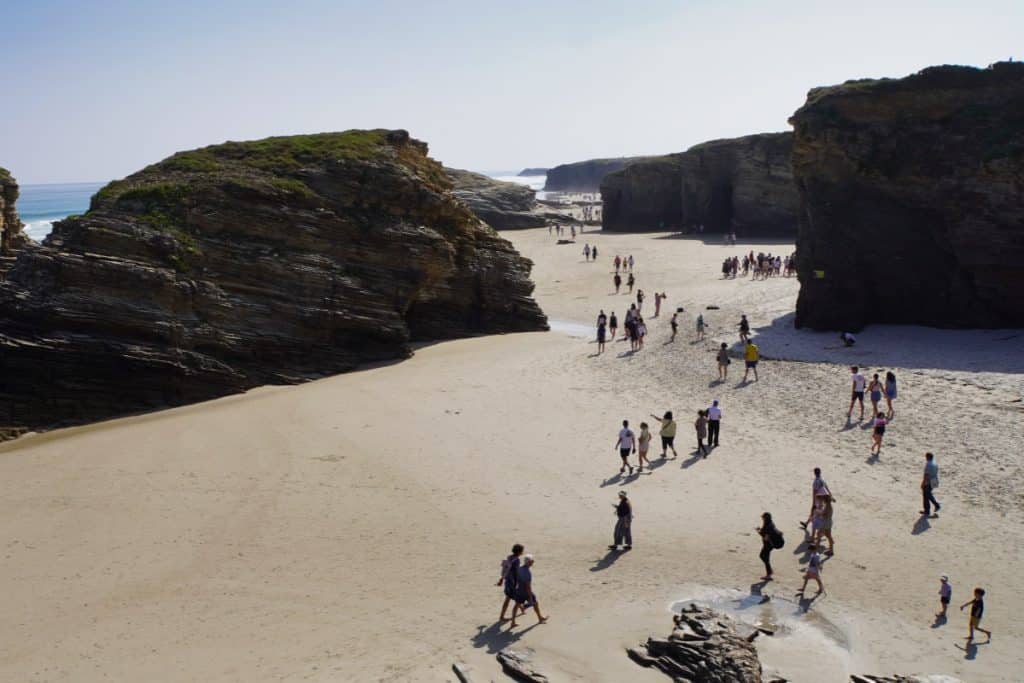
Playa de las Catedrales is the second most visited destination in Galicia after Santiago de Compostela. A few years ago, more than 16,000 visitors came to this very beach every day. Simply way too much for the existing infrastructure, the residents of the region and of course the nature. A solution had to be found.
In the meantime, you can only get on the beach if you have registered for free on a website and are lucky enough to be among the first 4800 registrations of the day. Especially in the high season the visitor tickets are in great demand and it is recommended to book very early.
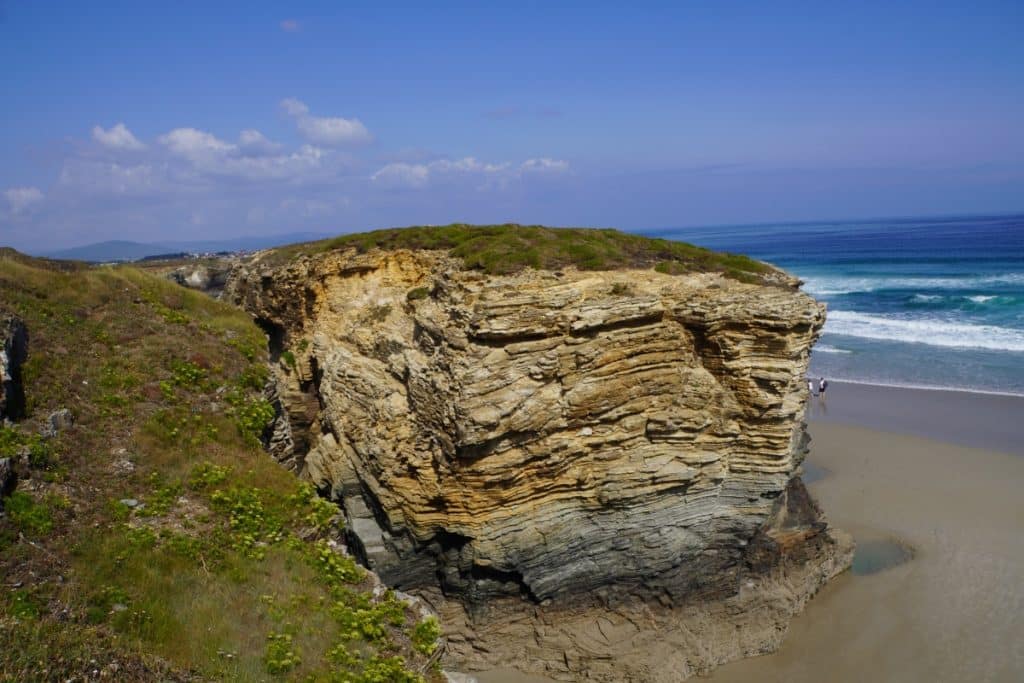
How to get to Playa de las Catedrales ?
Playa de las Catedrales is located in the municipality of Ribadeo, in the province of Lugo (Galicia), on the Cantabrian coast, about ten kilometers west of the city of Ribadeo. Access to the beach is possible by car. There are large parking lots from which you do not have to walk far to reach the stairs and thus the official entrance to the beach. Public transport does not go there, if I am informed correctly.
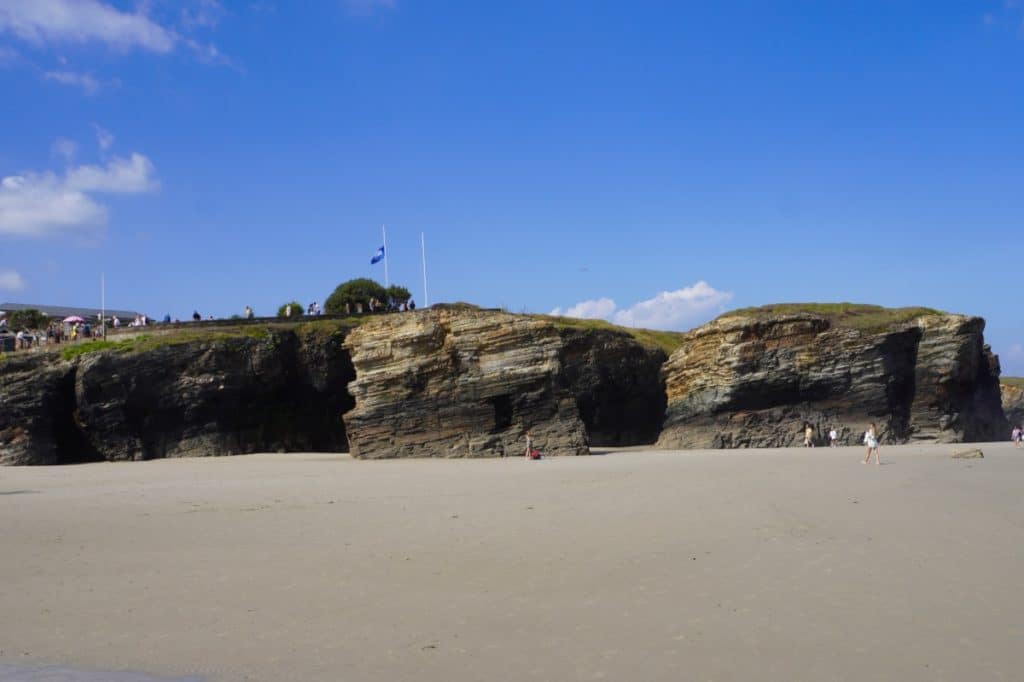
An access ticket must be booked on the reservation platform of the official website of the beach administration in order to visit Playa de las Catedrales.
What makes Playa de las Catedrales so special?
The beach is one of the natural jewels of this province and is designated as a natural monument. The name “Catedrales” already gave me an idea of what to expect there.
Playa de las Catedrales, Praia das Catedrais or Beach of the Cathedrals is not a beach with a church on it. But the name is derived from the supporting pillars of the gothic cathedrals, which often rise very high in the churches and carry the vault of the ceiling. The rock formations on this beach reminded the name giver exactly of these supporting pillars and the sky above is a wonderful roof after all.
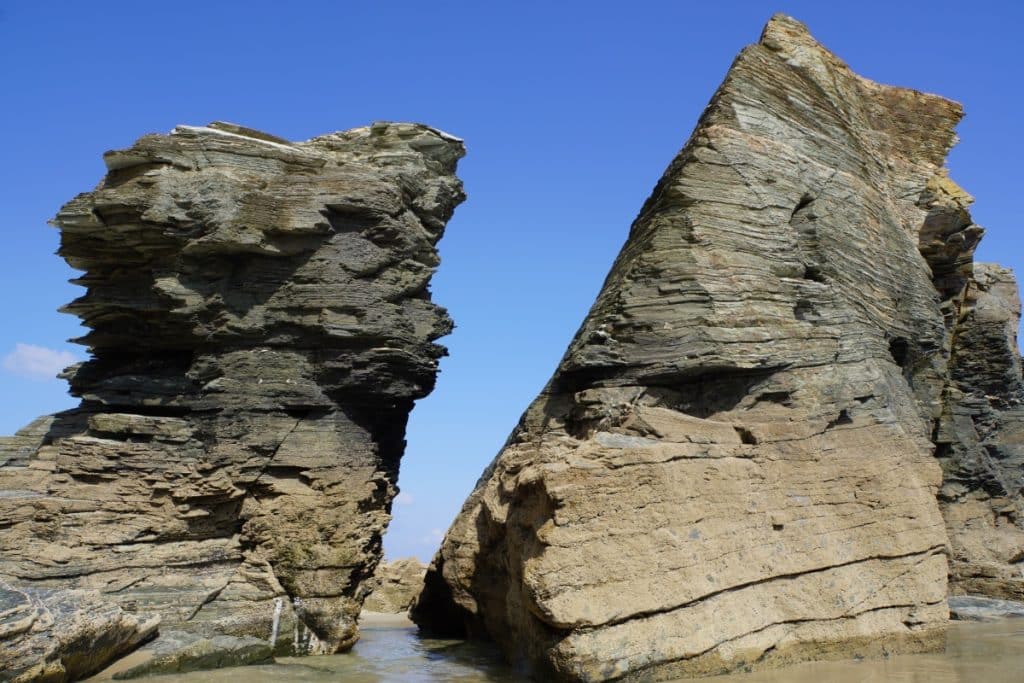
A walk on the beach at low tide
Visiting the beach, which is about 50 meters wide, is really worthwhile only at low tide. At high tide, the beach is very small and the characteristic stone formations can hardly be seen. The tides are also an important point that you should not underestimate in any case during your visit. The water comes very quickly and has already been the undoing of many a visitor.
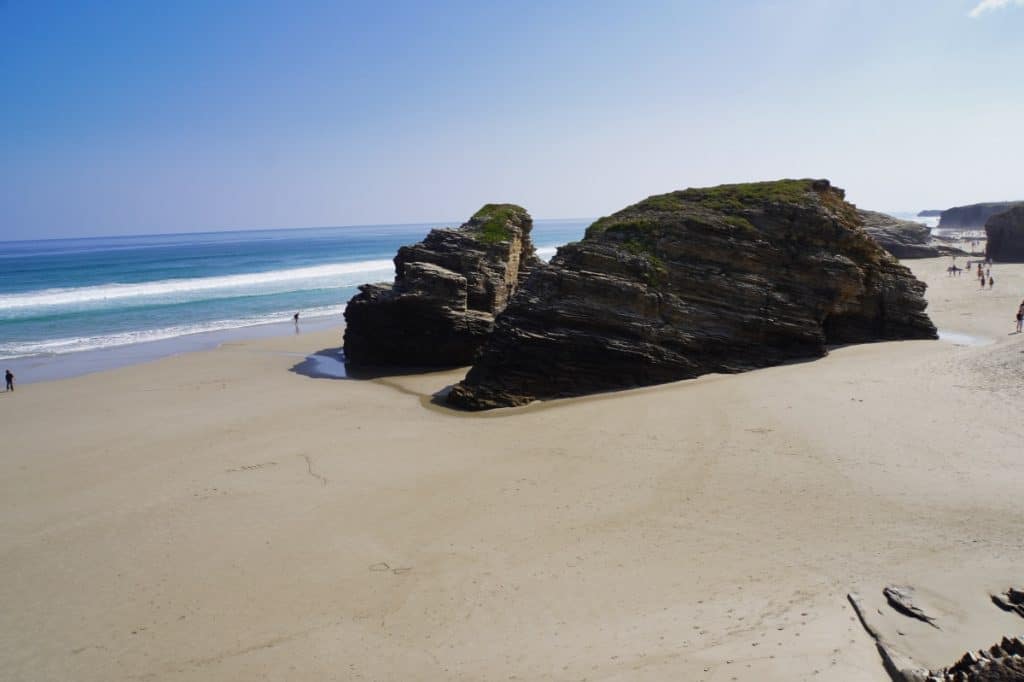
After checking the access permit, I descend the stairs to the beach. It is quite steep and the steps vary in height. It had rained during the night, the stairs were still wet and a bit slippery. Good that there is a railing to hold on to. Even from up here, the rock formations look impressive. Arriving at the last step, I almost have to jump onto the beach. The water has washed away a lot of sand and it almost floats in the air.
From the access, the beach stretches in both directions, in total it has a length of about 900 meters. The water had already drained a long way and the beach was beautiful in front of me. So I took off my shoes and started walking. I love to walk in the soft sand, but also along the still wet beach sections. Since it was still relatively early in the morning, the sand was still a bit cooler, but very pleasant. There are also hardly any stones on the beach section, so running barefoot was twice as nice for me.
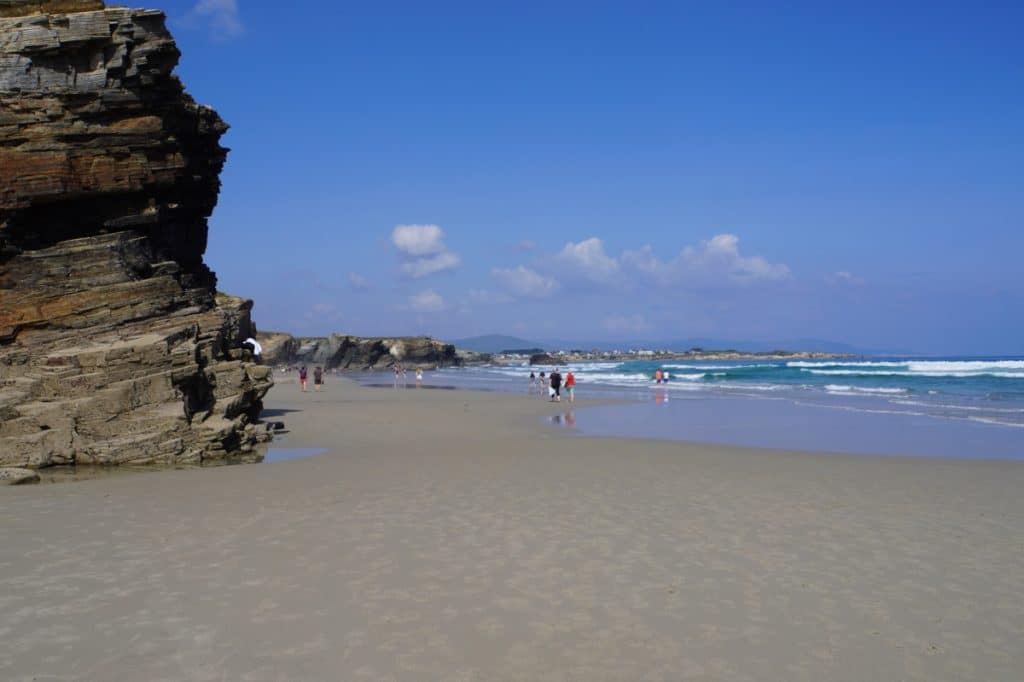
What rocks!
My first way led me to some rock formations, which as I stand right next to them, look really huge and powerful. From the cliff on the way to the beach they looked much smaller. About 30 meters high are the rocks and drawn by the erosion of the water and the wind. Everywhere I see cracks and small crevices, the stone has been formed into an interesting structure.
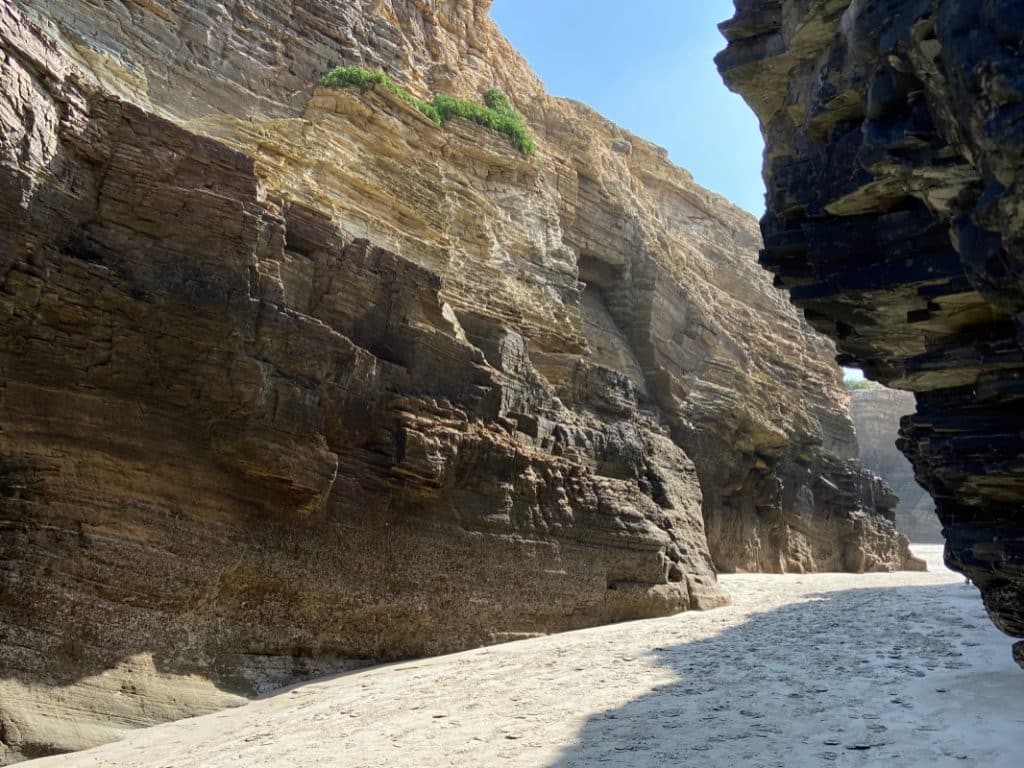
Between the individual rocks run sometimes wide and sometimes very narrow sand corridors. As I walk through one that is not too wide, it really does seem like I’m in a church. The rocks stretch high into the sky, which forms the roof. There are even areas that are still covered by small rock bridges. I can very much relate to the term cathedral at this point. It is the cathedral of the ocean!
The particularly beautiful arch-like rock formations are located on the far right side of the beach and can only be visited dry-footed at low tide. If you miss the right time here, you will not only get wet feet!
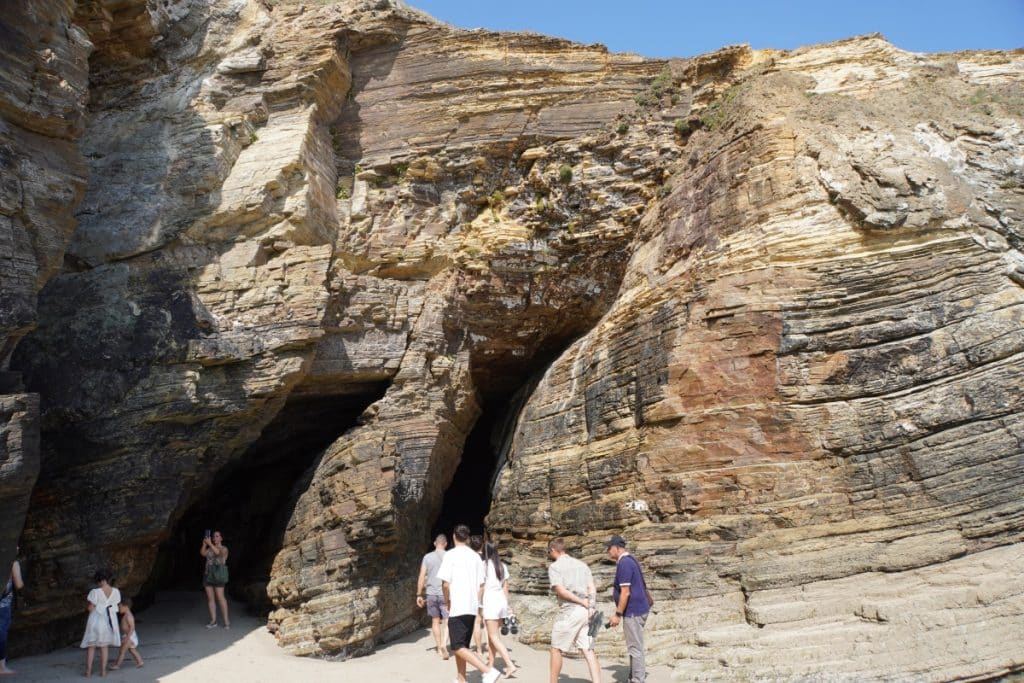
There are various caves, narrow passages between the rocks and naturally formed pools scattered all over the beach. Actually, one needs the entire time of low water to go exploring. I honestly didn’t dare to climb into one of the numerous caves. Not only the fear of a possible rockfall, but also the thought of being trapped there by the water kept me away. Looking into one of the numerous entrances it was already very dark and narrow…
Is Playa de las Catedrales worth the visit?
Even if it is very touristy at Playa de las Catedrales and many people are on the road there every day, it is worth the visit in my opinion. Nature has really created something incomparable here that I have not seen anywhere else even close.
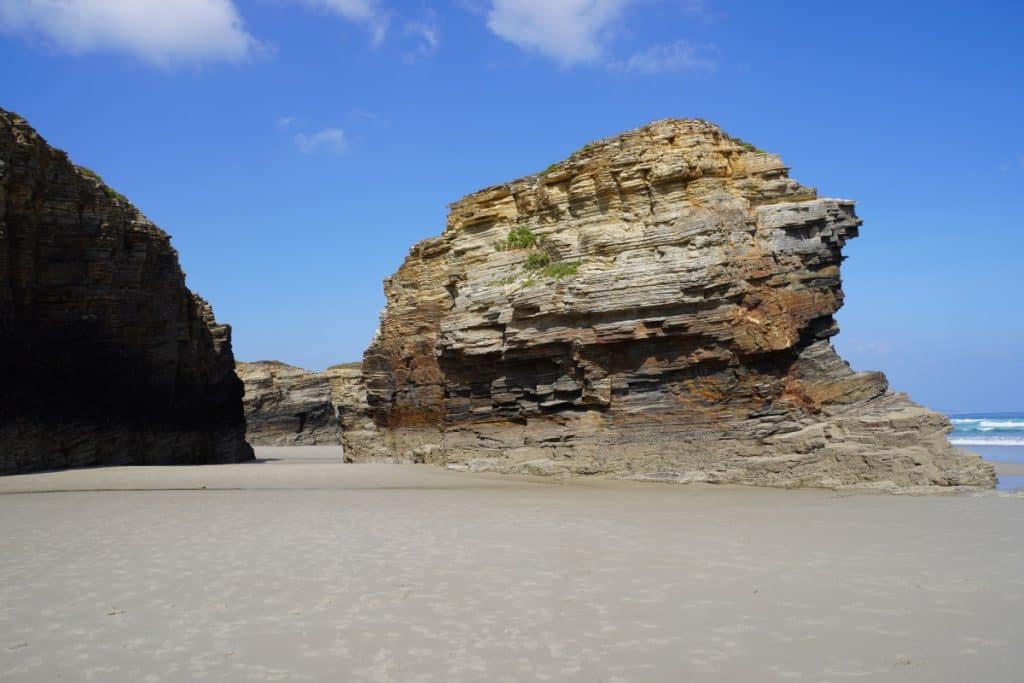
Playa de las Catedrales is certainly a photographer’s paradise. The breathtaking rock formations, the clear water and the cliffs offer countless possibilities for spectacular pictures. I can imagine that pictures of the sunrise or sunset can certainly transport a dreamlike mood.
I enjoyed my short stay there very much and with a little more time I would certainly have gone swimming.
Address:
Playa de Las Catedrales
Praia de Augas Santas
27780 Ribadeo, Lugo Spanien
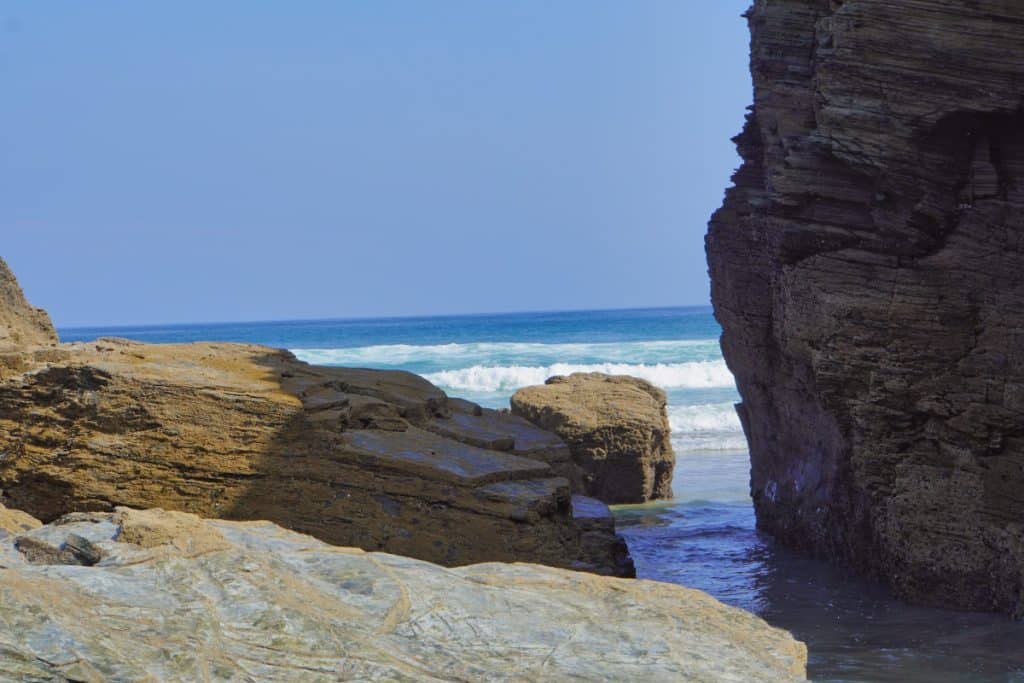
Good to know
The main access is via a staircase, which has steps of different heights. The lowest step can be very high if the sand is washed away too much. Most of the time the stairs are wet and can also become slippery. The visit can be so somewhat difficult with limited mobility.
There are two large and completely free parking lots at Playa de las Catedrales. One parking lot is asphalted and has not so many parking bays. Accordingly, it is quickly full. The second parking lot is a large meadow or a gravel parking lot and has no marked parking bays. In the summer months, it is difficult to find a free space, despite the availability of parking.
A reservation for the beach is required:
– in the Easter week
– in the summer months of July, August, September
Outside these periods, access is always possible.
Permits are issued a maximum of 30 days in advance and must be applied for via the registration website.
One may apply for the access authorization for maximum 25 persons at the same time. However, it is necessary to provide personal data (name and surname, gender, year of birth and ID). In addition, the day of the visit must be specified.
Children under 2 years do not need permission. For children under 14 years it is not necessary to provide the identification data.
It is useful to check the tide schedule to plan the visit to the beach. At high tide, the beach is covered with water for several hours. The recommended time window to access the beach is from two hours before to two hours after the time indicated as “low tide”. That is, if the low tide is at 12:00, it is recommended to visit the beach between 10:00 and 14:00.
Almost the entire beach is completely covered with water at high tide. You have to leave it as quickly as possible when the tide is rising to avoid being trapped in the caves and passages. This can be life threatening. The small area that is passable despite the high tide can of course be visited, but does not offer the possibility to discover the rock formations.
In the upper area, that is, on the cliff, there are well-maintained paths that are also suitable for people with reduced mobility. From there you have a fantastic view of the landscape. Access to the beach is only possible via stairs and therefore not barrier-free.
The cliffs and rock formations are permanently exposed to water and wind and erode. As a result, unstable sections can repeatedly come loose and fall onto the beach. You should not step too close to the rocks, the falling rocks can be life-threatening.
It is hard to predict when a rockfall will happen. However, the rocks are most vulnerable at times of heavy rainfall, when water penetrates the open crevices of the rocks.
Yes, swimming and bathing is possible. Please pay attention to the warning flags of the lifeguards! There are sections of the beach that are a bit quieter due to the distance to the beach access. Here you will definitely find a nice place to relax and swim.
Yes, dogs are allowed on the beach. There is no explicit prohibition here that would exclude dogs.
The visit to Playa de las Catedrales took place as part of a press trip with the Costa Verde Express .
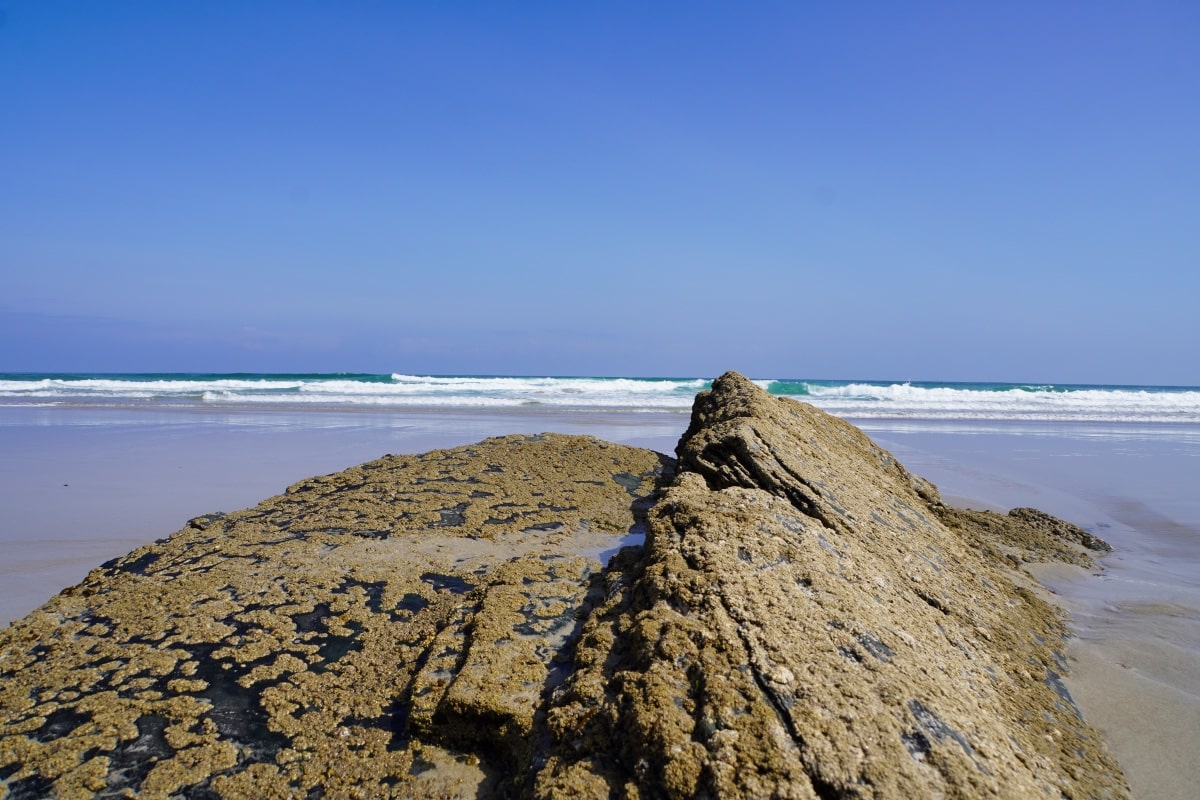


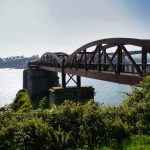
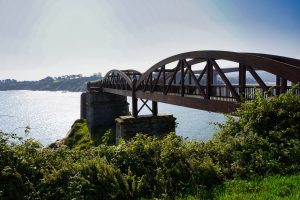

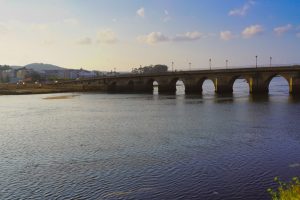

Leave a Reply